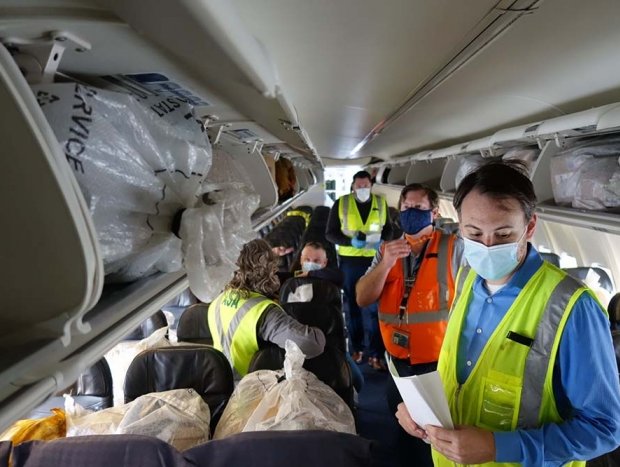
Alaska testing cabins for cargo to revive capacity
Alaska Airlines is looking at other ways to utilise its passenger aircraft to carry essential goods to people and businesses who need it most in view of the pandemic.

Alaska Airlines is looking at other ways to utilise its passenger aircraft to carry essential goods to people and businesses who need it most in view of the pandemic.
On any given day before the coronavirus dramatically changed travel, the airline carried about 400,000 pounds of cargo per day in the “bellies” of passenger aircraft – where luggage is stored. By utilising passenger aircraft as freighters Alaska will be able to backfill some of 45 percent loss in capacity across lower 48 and Hawaii where passenger flights have been reduced by 80 percent.

“We’re determined to make sure our nation’s supply chain stays robust and resilient, connecting critical cargo quickly to the communities we serve,” said Torque Zubeck, managing director of Alaska Air Cargo. “Our teams have been working hard to identify the safest and most effective processes to increase our cargo capacity as quickly as possible.”
A team of 40 people have been working on the effort since March. Once approved by the FAA, the airline would begin flying passenger aircraft dedicated to cargo within the United States as early as May.
Alaska aims to utilise the passenger cabin on five Boeing 737-900 aircraft – placing cargo boxes, mail and other items on and under seats, in overhead bins and in closets – creating room for an additional 13,500 pounds of cargo than a traditional passenger flight. In total, each flight will carry up to 30,000 pounds, including belly capacity.
The crew for these cargo flights will consist of two pilots and two flight attendants. The flight attendants will be seated in the main cabin to make sure the cabin is safe and secure and provide fire suppression if required, as passenger cabins do not have automated fire suppression systems like cargo compartments.
“Our cargo customers depend on us as much as we do them to fuel our supply chain with life-saving medical treatments, medical supplies and perishable foods that have a short shelf life,” said Rick Bendix, cargo marketing and business development program manager. “With the decrease in cargo capacity, this innovative approach allows to meet the demand of cargo customers whether “mom and pop” businesses or large freight forwarders who are working tirelessly to keep the critical goods moving.”

737-700 freighters are cargo-only aircraft that can carry up to 40,000 pounds of cargo.
This week, a team of Alaska employees tested loading an aircraft, securing the shipments and mapping a safe and viable process for leveraging passenger cabin space to ship critical cargo. Protecting the areas of the passenger cabin where cargo will be stowed was incorporated in the test to ensure the passenger aircraft can easily return to carrying our guests when needed.
According to Anthony Johnson, Alaska Airlines senior engineer, the overhead bins are designed for stowage of carry-on luggage and are durable. However, the airline needs to protect the seats by removing the life vests from under the seats and covering the leather with a protective fabric.

